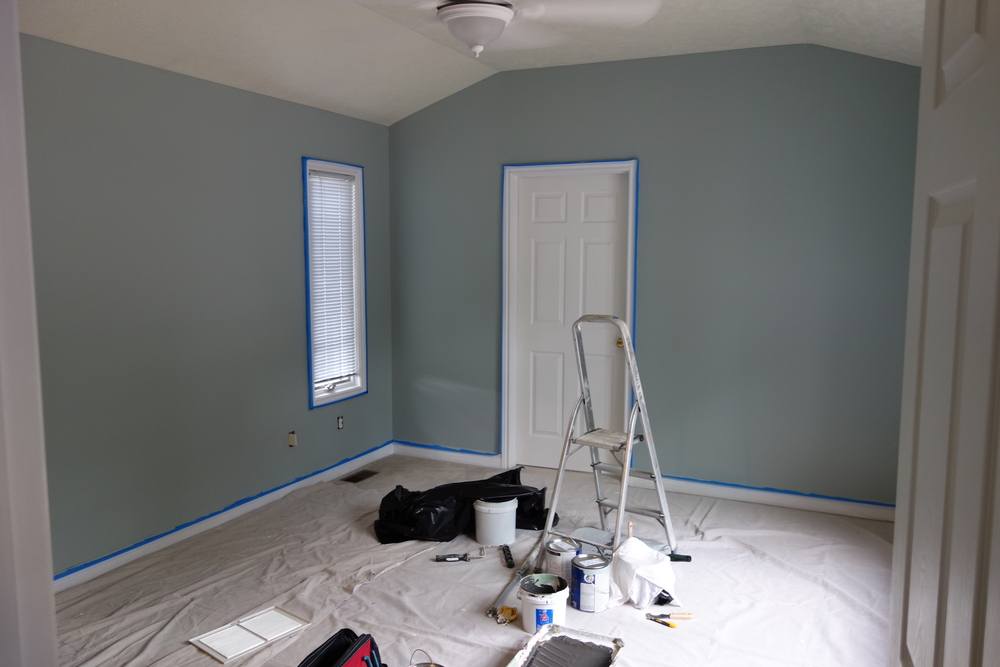Choosing a new colour scheme for your bedroom can be hard work. Using testers or sample sheets can be helpful. But first you need to narrow down your colour choices, otherwise you could find yourself trying out endless shades of paint on your walls.

One thing that helps is knowing what different colours and paint effects can bring to a room, whether that’s adding character, brightening it up or making it feel cosier. Here’s some tips for choosing a bedroom colour scheme to help you narrow down your decision.
Colours schemes can be lively
We often restrict bedroom colour schemes to soothing colours rather than invigorating ones. But you don’t need to stick to this rule all of the time. For instance, yellow can provide the sunny energy that our weather doesn’t always provide, helping us to rise early. To make it work in a more subtle way, try using it with cooling white. So, your bedroom strikes a balance. You could also try adding in some grey or warm wood touches to prevent it being too lively for restful sleep.
Another option for bright colours such as yellow, is to use them on your woodwork. You can use this trick to pick out a single colour from patterned or floral wallpaper.
Colour drenching works wonders
Colour drenching is a paint trick that’s incredibly popular at the moment. And it can work surprisingly well in bedrooms.
The key is of course, to pick the right colour. This is one time where a bright colour might not be the best choice. A dark and dramatic, gently warming or calm and soothing colour is the way to go. For example, a grey-green provides a wonderfully cosy and soothing backdrop to bedrooms.
Go for a colour combination
It’s not always necessary to simply stick to one colour throughout the room. You can use contrasting or coordinating colour combinations. This can be good when you want to use a dark colour in moderation or would like to add a bit of interest to a boxy bedroom.
Using two contrasting colours can help to make ceilings feel taller by painting vertical stripes or painting above the picture rail in a lighter shade than the walls. Similarly, you can make the room feel bigger by painting the lower half of walls up to the dado rail in a dark colour and the higher half in a light colour. On the flipside, painting the far wall in a darker colour than the rest of the room will bring it closer in.
Using cool colours successfully
Cool colours including blues, greens and purples can work for a bedroom, but you need to get the tone right so you don’t create a cold space. In dark rooms it’s best to aim for blues that are moodier and more dramatic, such as those with undertones of green or grey. Perhaps a denim, peacock or darker teal. Meanwhile, pastel blues work well in large, airy rooms to keep them feeling summery and fresh.
If you’re in any doubt, try adding neutral colours into the mix to warm your blue tones up. Or coordinate a cool blue with warmer shades such as ultramarine or an emerald green.
When to paint the ceiling
High ceilings are something that many of us covert in houses, as it brings grandeur and the feeling of space to the home. This makes Georgian, Victorian and Edwardian homes that are blessed with high ceilings and beautiful cornices attractive to live in.
Although high ceilings are ideal for luxurious lounges, they can make bedrooms feel a bit cold and impersonal. This is when painting the ceiling can be a good move. Painting it in a darker colour than the walls or as a continuation of the walls will bring it closer, making the bedroom feel much cosier.
How to bring out the best in paint
Once you’ve narrowed down your paint choices for your bedrooms, it’s important to understand how to achieve the perfect finish on your walls and ceilings.
If your budget allows, it’s worth spending a bit more on the actual paint as quality brands use a higher percentage of pigments in their paint and tend to be lower in VOCs. VOCs are what cause that lingering ‘paint smell’ and contribute to poor air quality in homes. So, you really want to minimise this in your bedroom.
If you really want the best finish from your paint though, you need to put in the prep work, filling and sanding the surfaces. The smoother the walls, the better your paint job is going to look.
Unfortunately, this does take time to do and many of us find it incredibly tedious. If this sounds familiar, rather than skipping these steps, it might be wise to get someone else to do it for you. An experienced painter and decorator will know exactly what’s needed to bring out the best in your paint, from the best type of filler to the right roller. Painting a bedroom costs between £350 and £500 depending on whether there’s wallpaper stripping and other extra tasks to do, which isn’t bad considering how much of your time it’ll free up.

